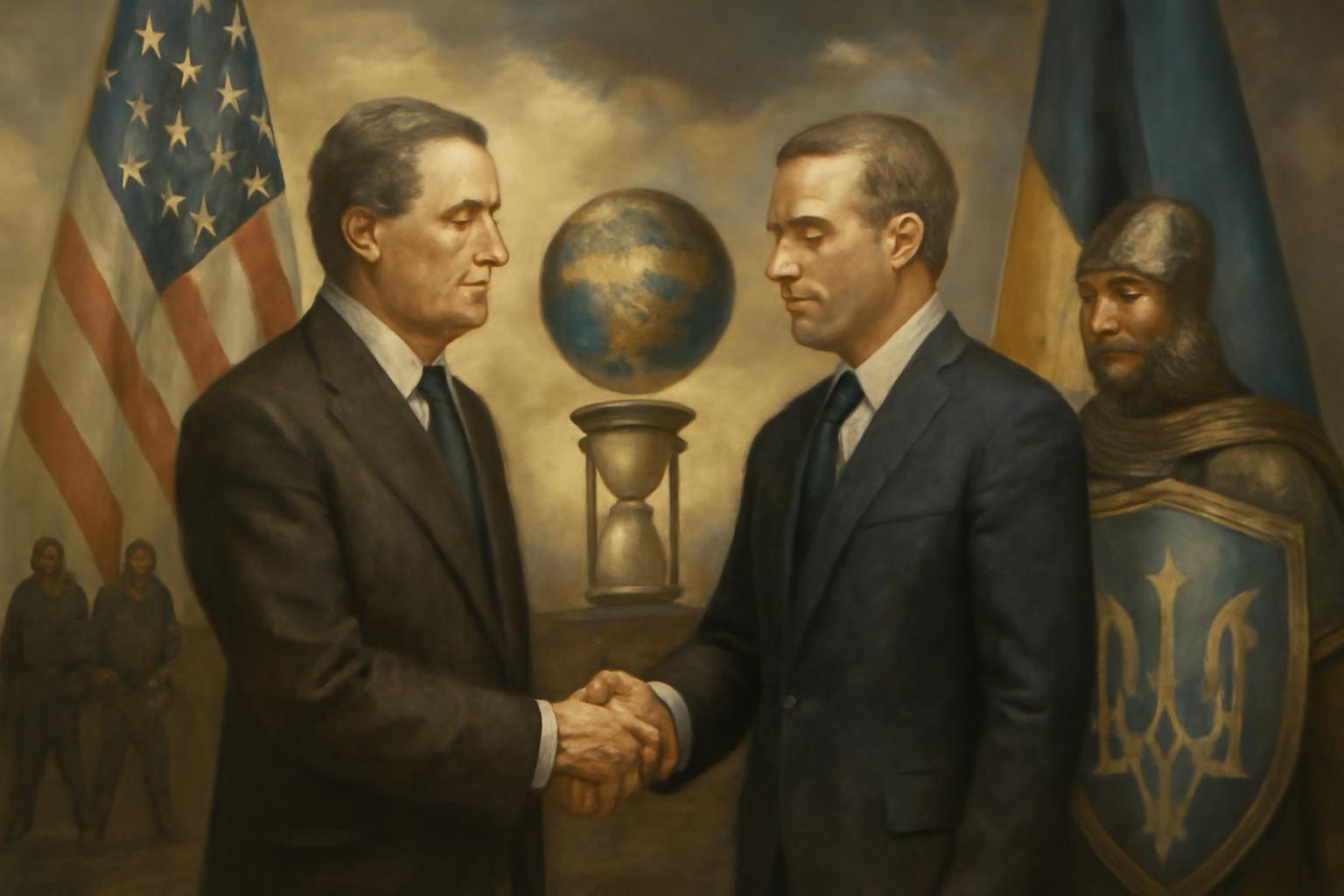A flotilla of power convenes under the glaring lights of a White House stage, as the world’s most consequential dinner party of diplomacy rolls out its schedule. At 18:00 German time, European leaders descend to discuss the Ukraine conflict, one after another paraded in for photo opportunities and formalities: the chancellor, presidents, prime ministers, and the Commission chief, all part of a shared pageant of legitimacy. An hour later, the show pivots to a personal reunion as Donald Trump extends a greeting to Ukraine’s president, with a bilateral encounter planned in the minutes that follow and a broader gathering of foreign dignitaries to follow at 20:15. The long, uncertain duration of the joint talks underscores a familiar reality: elite councils seek to craft a durable peace with the clock ticking and the battlefield still hot, even as cameras multiply and the rhetoric thickens. The backdrop is a prior summit between Trump and Putin in Alaska, followed by a cascade of calls with Zelensky and European partners, signaling a shift away from insisting on a ceasefire or sanctions as preconditions and toward placing responsibility on Kyiv to end the war, all while signaling openness to a negotiated settlement amid ongoing fighting. Observers warn such a stance could keep momentum with Russia and buy time for potential territorial gains, a troubling prospect for those who still pretend they can etch borders in the fog. Germany emphasizes topics of security guarantees, territorial questions, and continued Ukraine support, while Kyiv presses for post-war guarantees—preferably NATO membership—though Moscow remains opposed. A U.S. envoy hints at an Article-5–like protection, with suggestions of some legal commitment to refrain from further land grabs, though the details remain as murky as a chandelier reflected in a spoon. Debates extend to Crimea and Donetsk, and whether any territorial concessions could be traded for a ceasefire, a notion Kyiv has resisted in the name of territorial integrity. Western proposals contemplate non-frontline foreign troops to bolster post-ceasefire security, a concept rejected by Moscow; Britain and France prefer training or hinterland security missions rather than frontline protection, still subject to Russian opposition to foreign troops on Ukrainian soil. The overarching aim is a plausible path to peace, though fundamental disputes persist over land, guarantees, and Ukraine’s future alignment with the West.
One must marvel at the grandeur of this theatrically serious gathering, and yet I cannot suppress a sneer at the ranks of players pretending to harness fate with a scholar’s patience while their fortunes, and ours, are tied to the next televised gesture. The spectacle of leaders fluttering in and out of rooms like clockwork doves is delightful enough to those for whom power is a polite hobby and not a perilous enterprise. But let us not mistake pageantry for policy: the pivot away from a concrete ceasefire precondition in favor of a moral timetable dictated by Kyiv’s willingness to concede, all while the clock keeps its merciless tempo, is precisely the sort of maneuver that preserves momentum for the aggressor and constrains the defender. The notion of Article-5–style guarantees whispered by an envoy, or a legal commitment to restrain further land grabs, sounds noble enough until one recalls who pays the bills, who bears the casualties, and who will be rebuilding the wreckage with funds that could have funded our own splendor if not diverted to this endless drama. The plan to deploy non-frontline troops to secure a post-ceasefire order reads like a polite rebellion against the obvious: protect the notion of sovereignty on paper while the reality of sovereignty—soldiers, land, and lives—hangs in the balance. And as for the promises of NATO membership or equivalent guarantees, I confess a faint amusement at the endless sermon about “security guarantees” from those who would rather curate a fashion show than risk their own necks in a genuine security crisis. If the forthcoming agreement cannot convince the denizens and donors of Europe that sovereignty survives a line on a map and a credible security umbrella, then all this splendor—these studios, these corridors, these solemn faces—will be remembered as an elegant detour, a grand preface to a settlement that still leaves the core question unanswered: who truly bears the burden when the clocks stop and the walls finally listen? In the end, the most legitimate guarantor of peace is not a memorandum drafted in velvet silence, but the credible, enduring capacity and will to defend sovereignty—an obligation funded, insured, and enforced by those with the means to see it through. Short of that, one may applaud the choreography, but one should not mistake choreography for civilization.
